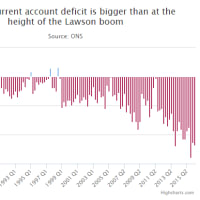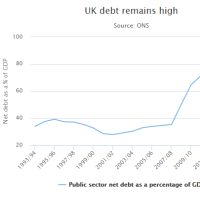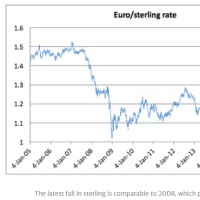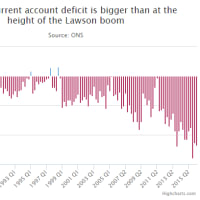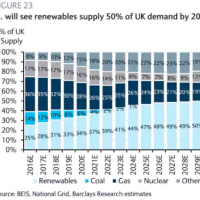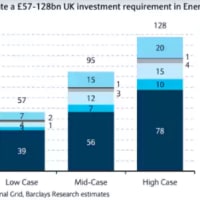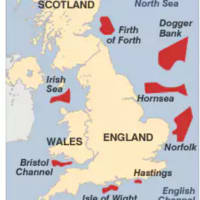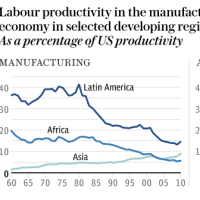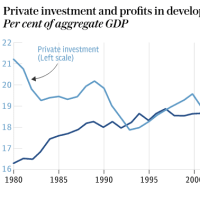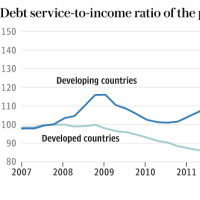Fed unemployment mystery holds key to global markets
(FRB失業率ミステリーが国際市場の鍵を握る)
By Ambrose Evans-Pritchard
Telegraph: 8:21PM BST 17 Sep 2013


(FRB失業率ミステリーが国際市場の鍵を握る)
By Ambrose Evans-Pritchard
Telegraph: 8:21PM BST 17 Sep 2013
Traders across the world are on tenterhooks, poised to launch a buying spree if the US Federal Reserve cuts its unemployment target below 6.5pc at its watershed meeting on Wednesday.
世界中のトレーダーは気が気ではありません。ヤマ場となる水曜日の会議でFRBが目標失業率を6.5%以下に引き下げたらダッシュで買いまくろうとウズウズしています。
Little else matters. Equity, credit, and exchange markets have already priced in a $10bn (£6.3bn) cut in the Fed's $85bn rate of bond purchases each month. They expect tapering of US Treasury bonds rather than mortgage bonds in order to keep the housing recovery alive.
他のことはどうでもいいのです。
株式、信用、為替の市場は、FRBの債券購入が月間850億ドルから100億ドルに削減されるということを既に織り込んでいます。
住宅市場の復活を潰さないよう、モーゲージ債よりも米国債の購入が減らされるだろうとの予測です。
The neuralgic issue is whether the Fed lowers its unemployment target or "threshold". This would mean loose money for longer, shaping the trajectory of interests rates far into the future. "The real drama is if the Fed does more than taper," said HSBC's Daragh Maher.
肝心なのは、FRBが目標失業率、または「閾値」を引き下げるかどうかです。
これはもっと金融緩和が続いて、金利上昇を遥かに先送りする軌道が出来るということです。
HSBCのDaragh Maher氏は「本当のドラマは、FRBがQE縮小以上のことをやらかすかどうかだね」と言います。
The Fed has a two-phase trigger. It aims to wind down bond purchases to zero as the headline jobless rate nears 7pc, and then start to raise rates at 6.5pc. The problem is that unemployment has been dropping faster than expected. It is already 7.3pc and could hit 7pc soon. This would be fine if the economy was roaring back and creating jobs, but it is shedding jobs at a disturbing pace.
FRBのトリガーは2段階です。
公表失業率(U-3)が7%に近付いたら債券購入を減少させ、そして6.5%に近付いたら利上げを開始することを目指しています。
問題は、失業率が予想よりも速く下落してることです。
既に7.3%に達しており、間もなく7%に届くでしょう。
経済が猛復活中で雇用もバンバン増やしているならこれは結構なことですが、身の毛もよだつスピードで雇用は減っています。
Headline unemployment is dropping only because people have stopped looking for work. America lost 347,000 jobs over the past two months, with the labour "participation rate" falling from 63.5pc to 63.2pc, the lowest since the late 1970s when fewer women worked.
公表失業率(U-3)が下落している原因は、仕事を探すのを止めたからに他なりません。
米国ではこの2ヶ月間に347,000人以上が失業し、労働力「参加率」は63.5%から、女性の労働者が今よりも少なかった1970年代終盤以来最低の63.2%まで落ち込みました。
The Fed's voting body appears split on whether this slide in participation is because the economy still needs stimulus, or whether there is a deeper "structural" cause predating the crisis that is impervious to easy money policies. This could be happening because of the switch from "brawn to brain" as technology evolves, leaving the least educated behind.
労働力参加率が減ったのは経済が今も刺激を必要としているからなのか、はたまた金融緩和にもびくともしない危機の前から存在する、より根深い「構造的」原因のせいなのかを巡って、FRBの理事会は分裂してるようです。
技術が進歩するにつれて「筋力から脳力へ」の切り替えでお勉強出来ない人が取り残されるので、こういうことになっているの可能性もあります。
Economist Tim Duy from Fed Watch said the bank is "moving towards an epiphany" on the jobs debate, concluding rightly or wrongly that the problems are structural. This puts it on track for rapid tightening.
FedWatchのエコノミスト、ティムd・デュイ氏曰く、FRBは雇用議論の「悟りに近付きつつ」あって、ことの是非はさておいて、問題は構造的だという結論を出しつつあるそうです。
これはスピード緊縮まっしぐらですよ。
San Francisco Fed chief John Williams, previously seen as a dove, raised eyebrows earlier this month by suggesting the problem is structural, partly caused by ageing baby boomers drifting off the rolls. The message is that the jobs market with tighten soon, stoking wage pressures. The "non-accelerating inflation rate of unemployment" is higher than supposed.
サンフランシスコ連銀のジョン・ウィリアムズ総裁は、これまでハトだと思われていましたが、今月先に問題は構造的だ、団塊世代の高齢化が問題の一部だ、と言い放って皆を仰天させました。
労働市場は間もなく厳しくなって賃金圧力が強くなりますよ、と言ってるわけです。
「非インフレ加速的失業率」は想定を上回るぞ、と。
Mr Williams said the Fed should stick to the headline jobless rate, and left no doubt he thinks quantitative easing is causing asset bubbles. If this is the majority view, the Fed now has a hawkish bias and may raise rates faster than the market expects. This would send tremors through the global financial system.
ウィリアムズ氏は、FRBは公表失業率(U-3) だけ考えていればいいと発言し、QEが資産バブルの原因になっていると思っているのは間違いありません。
この考え方が大勢を占めているなら、FRBは今やタカ派の巣窟であるわけで、市場の予測よりも早く金利を引き上げてしまうかもしれません。
これは世界の金融システムに激震をもたらすでしょう。
Alain Bokobza, from Societe Generale, said the Fed will prove tougher than expected, triggering a sharp fall on Wall Street. The S&P 500 index will fall from its current 1705 to 1475 in the fourth quarter. There will be further capital flight from emerging markets. The yield on 10-year US Treasuries will rise to 3.5pc by next June. "US equities are not immune to higher bond yields. Gold is particularly vulnerable."
ソシエテ・ジェネラルのAlain Bokobza氏は、FRBは予想よりも強硬だということが明らかになって、ウォール街に大暴落を引き起こすだろうと言います。
第4四半期、S&P500指数は現在の1705から1475まで下落するでしょう。
また、新興市場からは更にわらわらと資本が逃げ出すことでしょう。
そして米国債10年物の金利は来年の6月までに3.5%まで上昇するでしょう。
「米国株だって債券金利上昇の影響から逃げられない。金は特にヤバい」
John Davies from Standard Chartered said the signal to be sent on Wednesday is crucial. "If they cut the unemployment target to 6pc, this will push out rate hikes by another nine months," he said.
スタンダード・チャータードのジョン・デイヴィース氏曰く、水曜日のメッセージは重大だそうです。
「FRBが目標失業率を6%まで引き下げれば、あと9か月間は利上げを先送りすることになる」とか。
But such action would leave the Fed open to accusations that it is shifting the goalposts, and may be waiting too long to nip inflation in the bud. It is damned if it does, and damned if it doesn't.
でも、そんなことをすれば、FRBは、どんどん目標変えるなと怒られるでしょうし、インフレの芽を摘むには手遅れかもしれませんし…。
やってもやらなくても地獄ですね。











